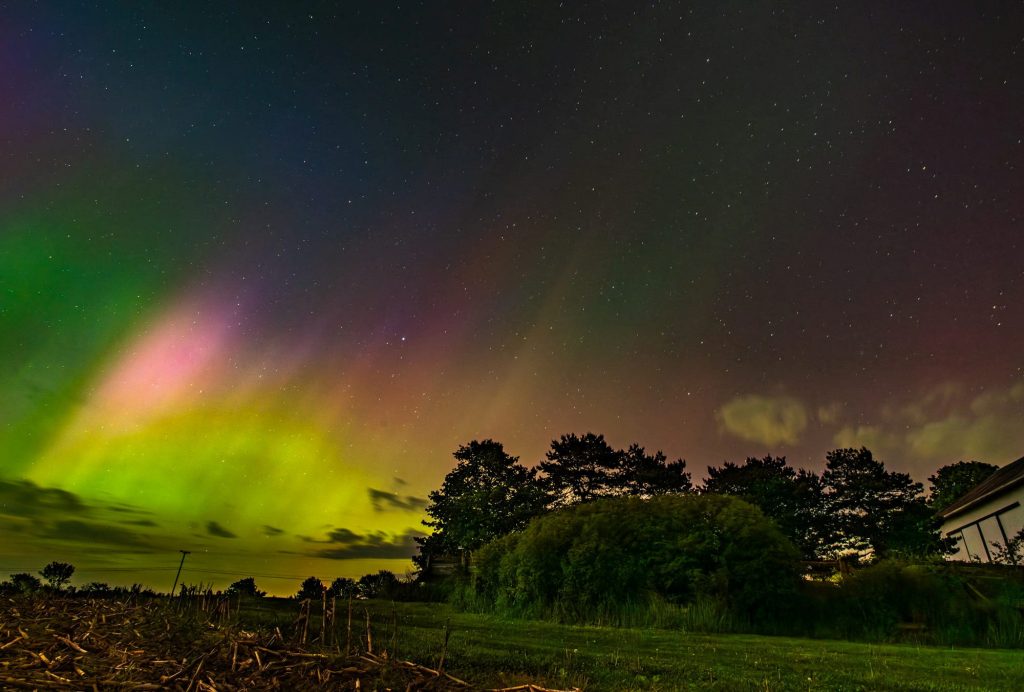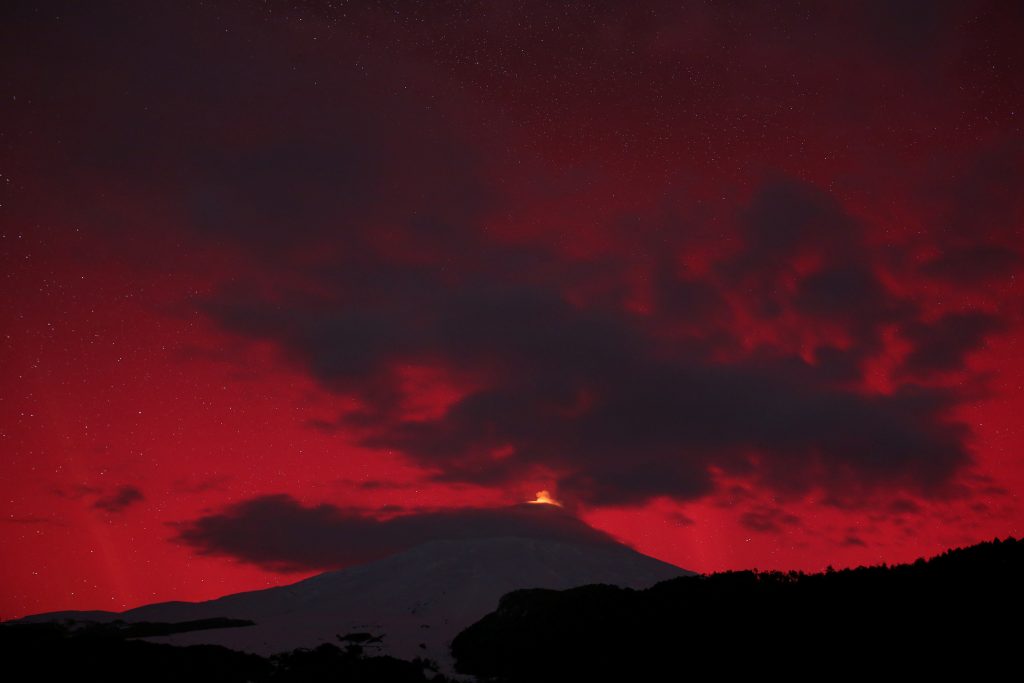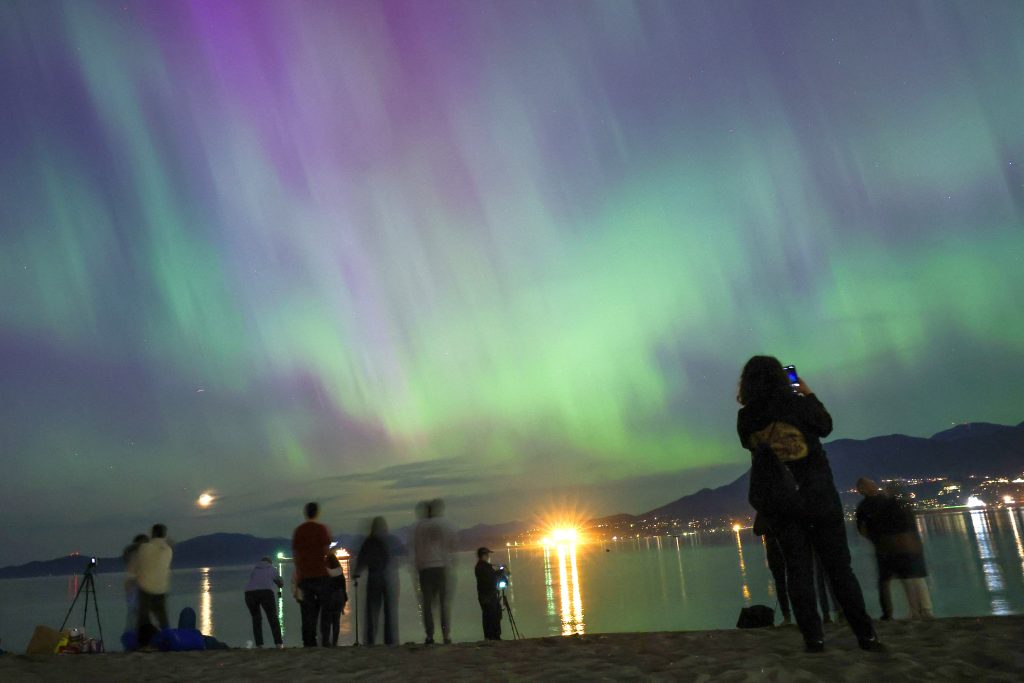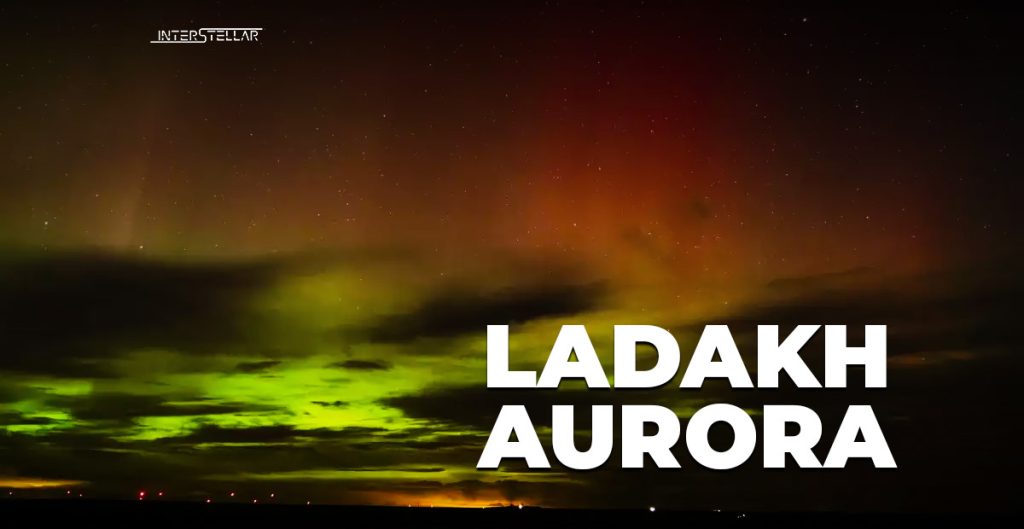The aurora borealis, commonly referred to as the Northern Lights, typically visible in polar regions, recently made a rare appearance in the skies over Ladakh, India. This exceptional sighting occurred in Hanle, above Mount Saraswati, at latitudes of 34-36°N, where such phenomena are usually not seen.
The Indian Astronomical Observatory captured this rare event on camera, marking it as a significant observation given the aurora’s typical confinement to higher latitudes around the Arctic and Antarctic. The sighting coincided with a severe (G4) geomagnetic storm, as classified by NOAA’s Space Weather Prediction Center, which is unusual for mid-latitude regions like Ladakh.
This phenomenon, resulting from disturbances in the magnetosphere caused by solar wind, emerged in Ladakh’s skies around 1 a.m. on May 11 and is expected to continue through the weekend due to ongoing coronal mass ejections impacting Earth’s outer atmosphere.
The aurora borealis displayed in Ladakh was primarily a red arc, unlike the dynamic, multi-coloured displays seen in traditional northern auroras. This red arc also appeared during a previous sighting on the night of April 22-23, 2023, following a coronal mass ejection on April 21 that triggered another G4 class geomagnetic storm.
Explaining the science behind this, Dr. Ravi A V Kumar, a Scientific Officer at the Institute for Plasma Research Centre, noted that solar flares, which peak every 11 years in a cycle of solar activity, are the primary drivers. The upcoming peak in 2025 is expected to bring more such solar flares. These charged particles from the sun travel at high velocities and can disrupt Earth’s magnetic field, occasionally reaching lower latitudes to create auroras.
Apart from Ladakh, the aurora borealis was also visible in various parts of Europe and China, presenting as a reddish arc. Moreover, this remarkable event was observed in other global locations such as Russia, Germany, and Tasmania in Australia, where people captured stunning images of the aurora australis.




Dr. Kumar also highlighted the potential impact of solar flares on daily activities, noting that they can disrupt satellite TV signals and radio communications, affecting how we communicate and gather information.


